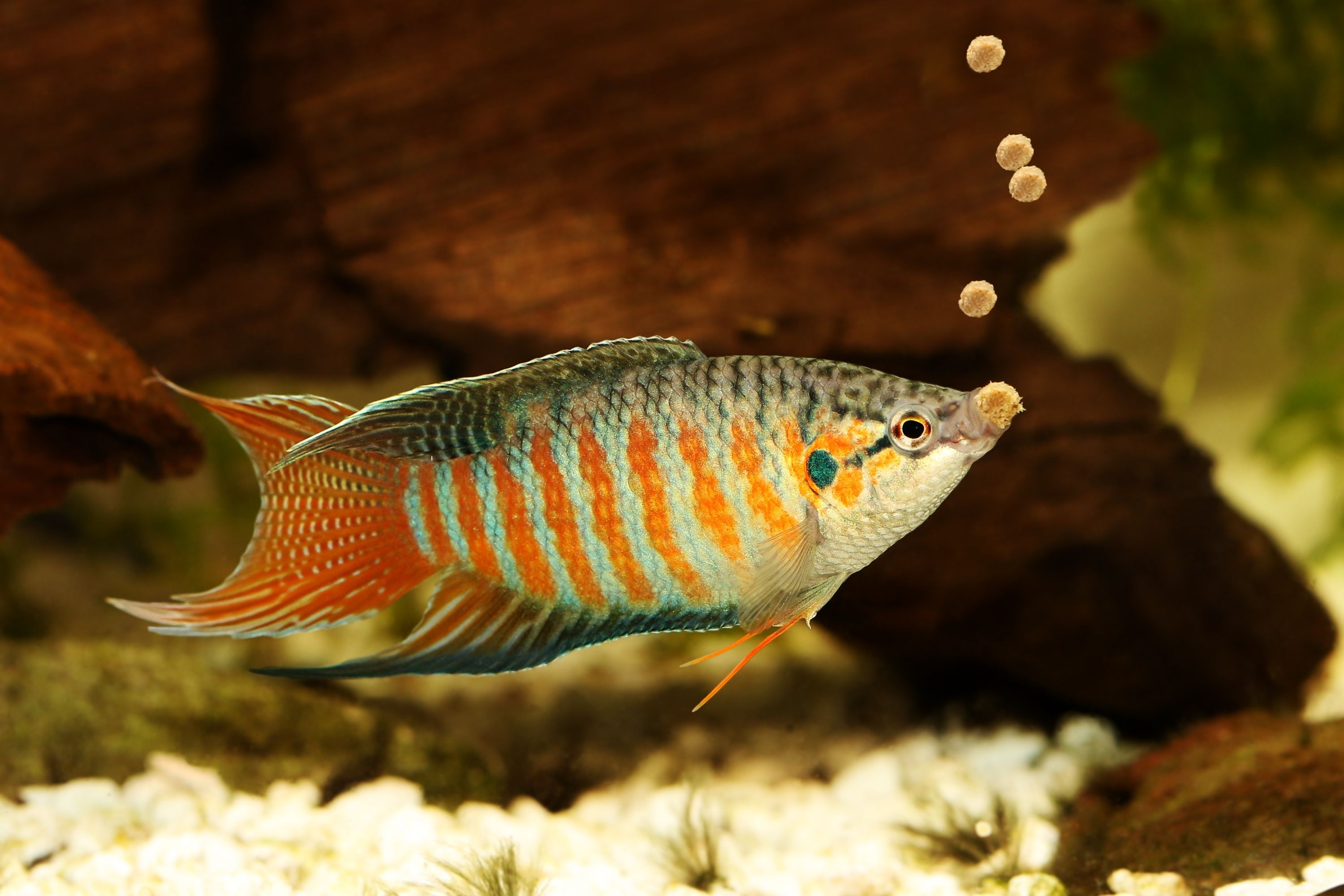Paradise fish
(Macropodus opercularis)

Description
The paradise fish, paradise-fish, paradisefish, or paradise gourami (Macropodus opercularis) is a species of gourami found in most types of fresh water in East Asia, ranging from the Korean Peninsula to northern Vietnam. This species can reach a standard length of 6.7 cm (2.6 in), though most are only about 5.5 cm (2.2 in). Paradise gouramis were one of the first ornamental fish available to western aquarium keepers, having been imported 1869 to France by the French aquarium fish importer Pierre Carbonnier in Paris. The paradise fish is one of the more aggressive members of its family. It is more aggressive than the three spot gourami, yet less pugnacious in nature than the less commonly kept combtail. Paradise fish are fairly combative, harassing and attacking each other, as well as potentially assaulting and killing small fish. During a fight, the paradise fish will often change its color, usually displaying dark blue lateral lines on the sides of their bodies; extend its fins; and spread out its operculum. Paradise fish are more likely to show aggressive behavior towards other paradise fish than to fish of a different species. Acts of aggression tend to increase as the distance to the fish's home in Asia increases. In the wild, they are predators, eating insects, invertebrates, and fish fry. The popularity of this species has waned in recent decades as much more colorful (and often less abusive) species of gouramis have become widely available to hobbyists. This species is one of the few fish that can change its color (lighter or darker) in response to stimuli. It also appears that paradise fish are capable of learning through a type of restrictive process. Most forms of active teaching seem to hinder the paradise fish's ability to learn the movements of its owner via careful observation. Paradise fish are tolerant of a wide range of water conditions, surviving in cool and warm waters alike. In the wild, they are most commonly found in shallow water containing dense vegetation, such as a marsh or rice field. However they can be kept in outdoor ponds, or even the simplest of unheated aquaria. They will accept virtually any food, but should be given a reasonably high-protein diet (as opposed to vegetable-based foods.) They also eat mosquito larvae, black worms, brine shrimp, and small flies.
Taxonomic tree:







